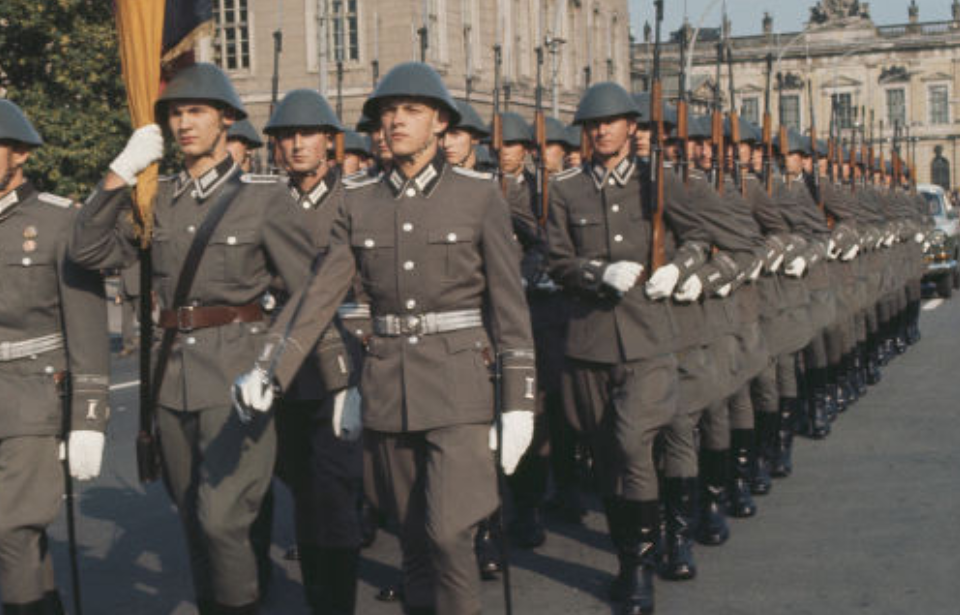As Operation Barbarossa began, the Germans encountered several unforeseen challenges. While historians commonly underscore the impact of adverse weather conditions, it’s crucial to acknowledge that the Red Army had outfitted its troops with significantly more advanced weaponry compared to the Wehrmacht.
In response to this technological disparity, the Germans developed the Gewehr 43, a semi-automatic rifle that represented a significant leap forward from its predecessors, the G41(M) and G41(W).
The G41(M) and G41(W) had their faults
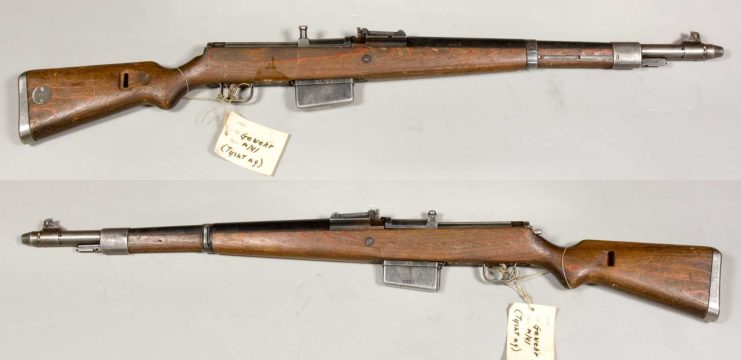
The development of the Gewehr 43 aimed to address the shortcomings of its predecessors, the G41(M) and G41(W). These battle rifles, produced by Mauser and Walther Arms, were introduced into service with the Wehrmacht in 1941 and remained in use until the conclusion of the Second World War. Both had issues, largely stemming from the constraint of not drilling gas ports into their barrels, rendering them impractical for effective use on the battlefield.
The G41(M) earned a reputation for being overly complex, cumbersome and heavy. Operators struggled to achieve accurate shots due to the sight’s placement on the gas tube at the barrel’s front, leading to misalignment after prolonged use. Despite producing over 6,600 units during World War II, 1,673 had to be returned due to their shortcomings.
While the G41(W) fared somewhat better, it still encountered challenges. Combat reliability issues persisted, and reloading posed significant difficulties due to its fixed magazine fed by two clips. Additionally, both the G41(W) and G41(M) suffered from muzzle corrosion caused by the use of corrosive salts in the ammunition primer.
Assembling and cleaning these rifles on the battlefield presented further challenges due to their tight-fitting parts.
Developing the Gewehr 43
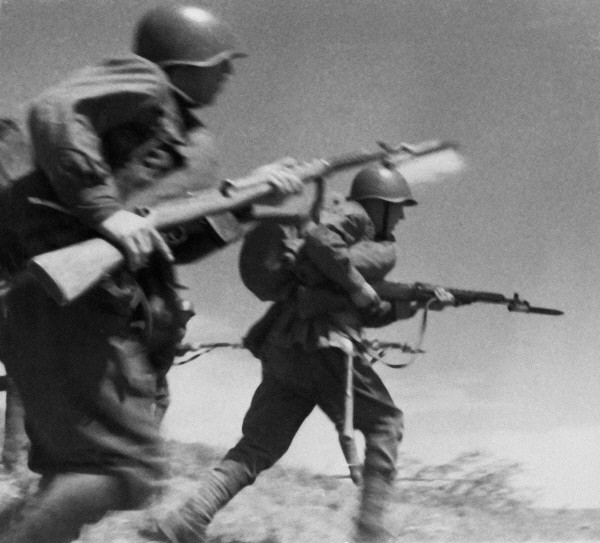
The challenges associated with the G41(M) and G41(W) weren’t the sole reasons for the development of the Gewehr 43. When the Germans launched Operation Barbarossa, the invasion of the Soviet Union in 1941, they were taken aback by the advanced firearms wielded by the Red Army. Unknown to German officials, the Soviets had re-equipped their infantry with more potent weaponry, prominently the SVT-40.
The SVT-40, a semi-automatic rifle, used a straightforward gas mechanism powered by a port cut into the barrel. It introduced a modern box magazine, surpassing the performance of the Wehrmacht‘s rifles. In response to this gap, Walther Arms designed the G43, incorporating elements from the G41(W), along with a comparable gas system to the Soviet rifle. This weapon proved to be lighter, more robust, tougher and easier to manufacture, leading to the production of 402,713 units during World War II.
Manufacturing of the G43 was undertaken by Walther, Wilhelm Gustloff-Werke and Berlin-Lübecker Maschinenfabrik. Certain parts were also produced through forced labor at Buchenwald and Neuengamme concentration camps.
Shortly after its deployment on the battlefield in April 1944, the G43 underwent a name change to Karabiner 43. This alteration was prompted by the fact that the term Gewehr, meaning “long rifle,” didn’t accurately apply, given its barrel was two cm shorter than the standard-issue Karabiner 98k.
Gewehr 43 specs
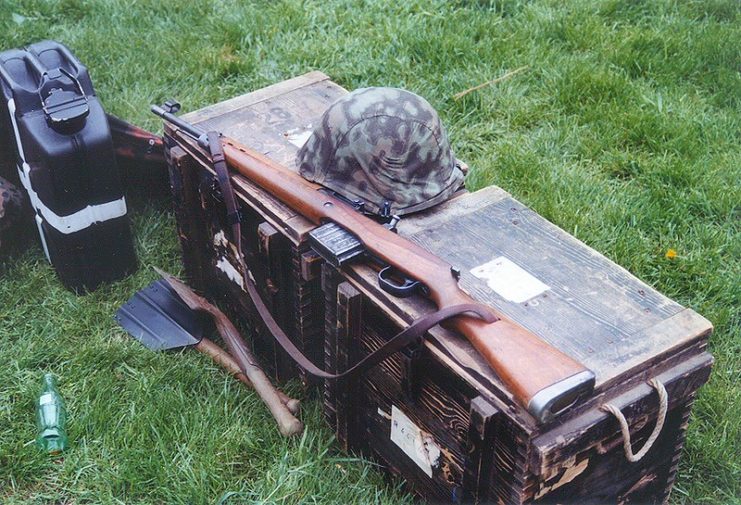
The Gewehr 43 proved to be a robust and economical semi-automatic rifle, weighing 9.7 pounds and measuring 43.8 inches in length, with a 21.5-inch barrel constituting just under half of that dimension. The standard-issue variants were equipped with iron sights, including a hooded pointed-post-type front sight and a tangent-type rear sight. Approximately 55,335 sniper versions of the G43 were manufactured, featuring the Zf42 scope.
Like several other German-made firearms, the G43 utilized the 7.92 x 57 mm Mauser cartridge. Ammunition could be fed through either five-round stripper clips, allowing reloading without removing the magazine, or a 10-round stamped-steel detachable box magazine. Typically, soldiers in the field carried a G43 pouch containing two spare magazines and one stripper clip pouch.
The G43 exhibited a muzzle velocity ranging from 746-776 m/s, with a rate of fire of 30 rounds per minute. The standard version had an effective range of 500 meters, while those equipped with the sniper scope could engage targets at distances of up to 800 meters.
When the name was changed from G43 to Karabiner 43, an undisclosed number of rifles underwent modifications to fire the 7.92 x 33 mm Kurz cartridge and utilize magazines compatible with the StG44 assault rifle.
Disorganized use during the Second World War
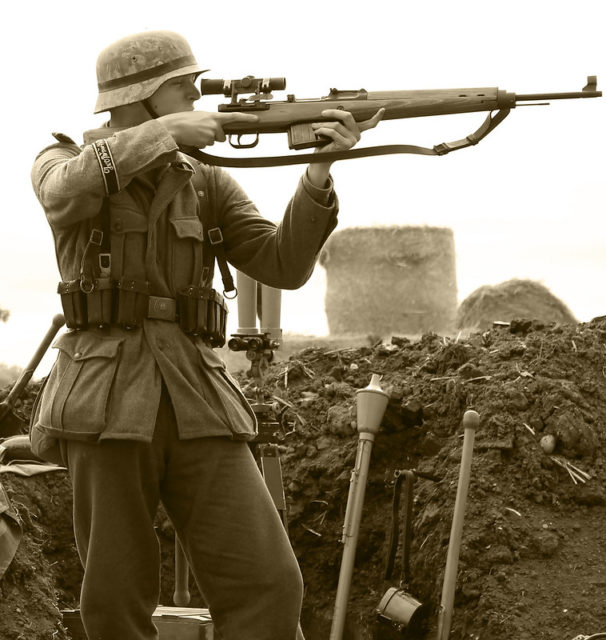
Upon entering service with the Wehrmacht in October 1943, the plan was to equip 19 Gewehr 43s to each infantry company, 10 of which were equipped with the Zf42 sniper sight. This was never fully realized, due to the state of the German Army at the time. As the Allies continued their successful push across Europe, military officials were never able to adequately distribute the rifle.
That being said, the G43 saw regular use with German special units, who praised it for its self-loading capabilities, rugged nature and overall power. Proof of its ruggedness were shown in its use as ladder rungs by the Gebirgsjäger when they were tasked with climbing mountains.
The Czech Army found the Gewehr 43’s sniper capabilities appealing
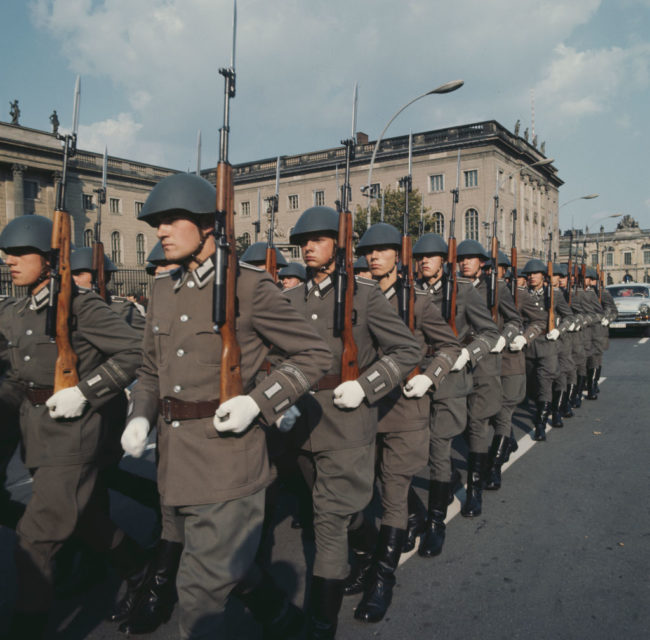
Following the Second World War, the Gewehr 43 was adopted by the Czechoslovak Army, which found the rifle’s capabilities as a sniper weapon particularly appealing. It remained in service in Czechoslovakia for several years, and was later adopted in East Germany by the Deutsche Volkspolizei and the Border Troops of the German Democratic Republic.
More from us: Schwarzlose MG: The Unusual Austro-Hungarian Machine Gun of World War I
Want War History Online‘s content sent directly to your inbox? Sign up for our newsletter here!
Outside of Czechoslovakia and East Germany, the G43 also saw use in Romania and during the First Indochina War, with French soldiers armed with the semi-automatic rifles. Guatemala also purchased a handful of them from Czechoslovakia prior to the 1954 coup d’etat, while Brazil manufactured its own variant, the M954 Mosquetão. However, it was never fully adopted.
